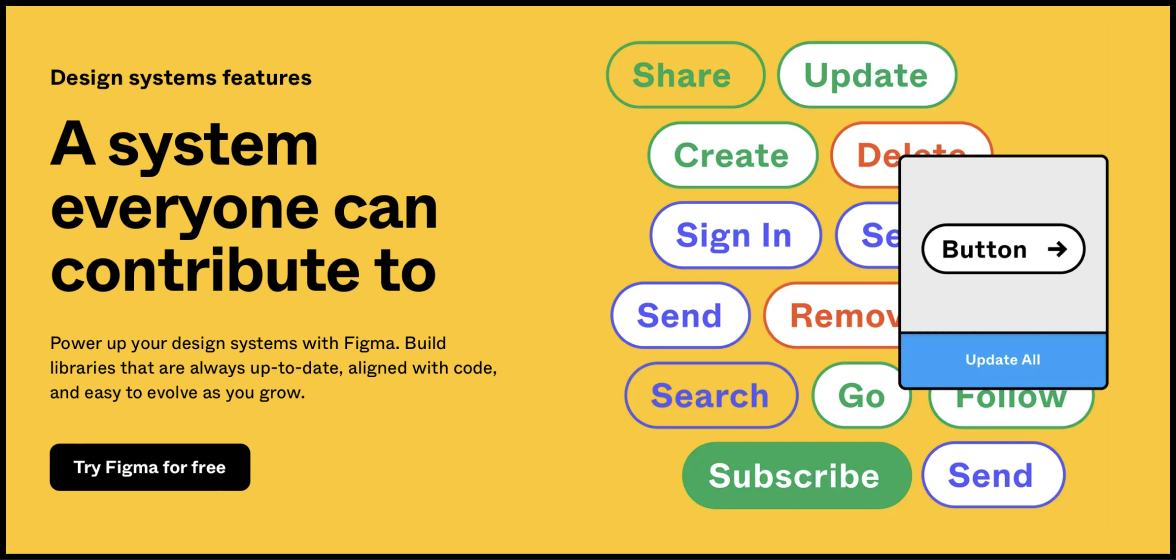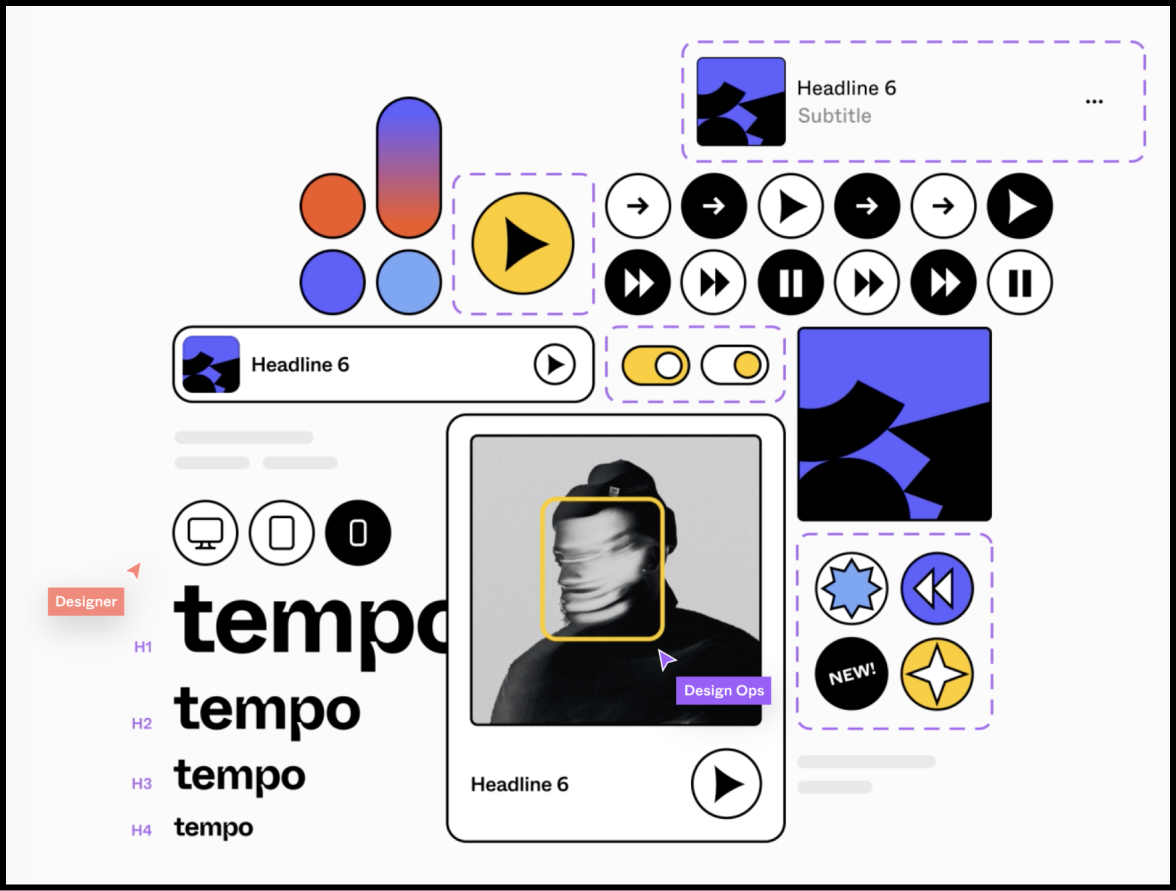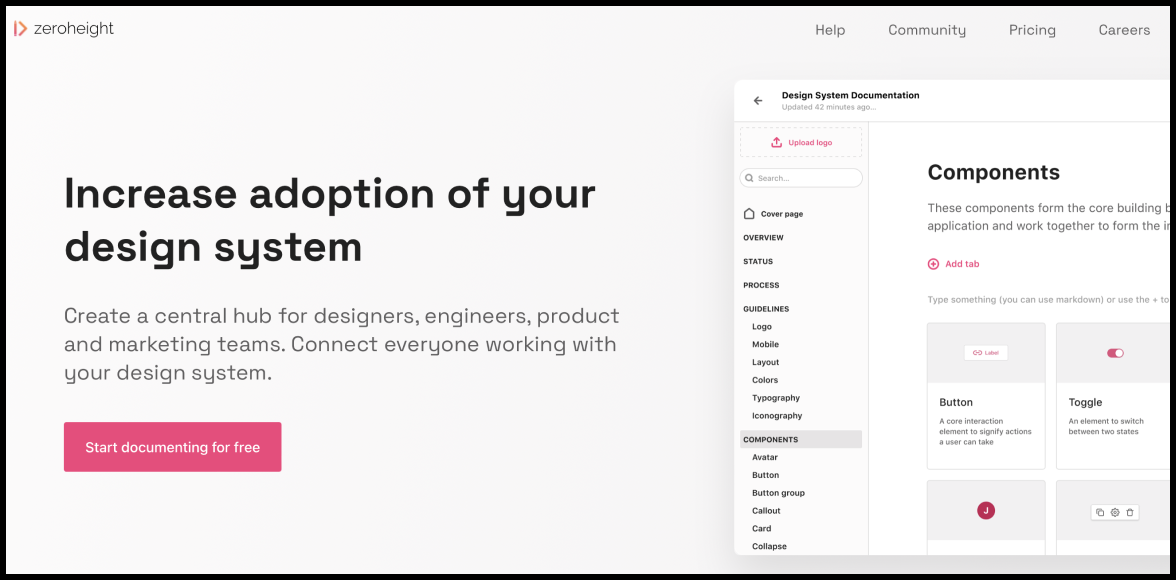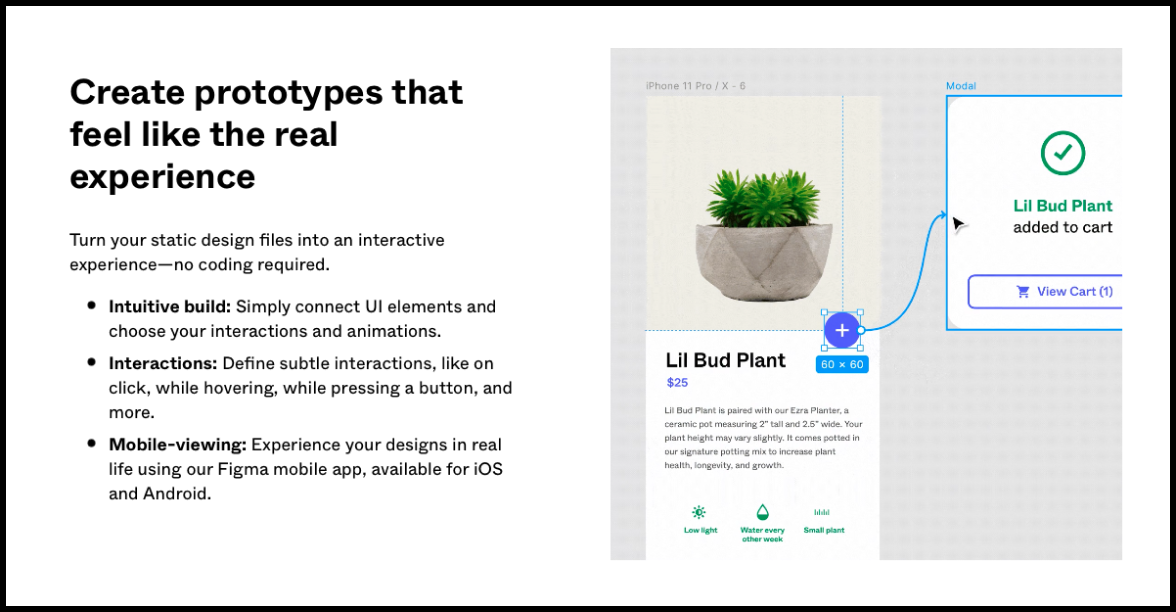Lucky Beard: Getting the Band Together – Globally
Founded in 2014, Lucky Beard is a global design and advisory firm with offices in Pretoria, Johannesburg, London and Dublin. Lucky Beard’s work is primarily within financial services – banking, tech, insurance – but they also have clients in hospitality, high fashion and heritage management.
“We’re happy to work with any client that aligns with our values,” says Brigitte le Roux, Lucky Beard’s Design Ops Director. “Broadly speaking, we aim to make the world a better place; to create products that help people, and that people want to use.”
We spoke with Brigitte and her Lucky Beard colleagues Georgia and James about the impact that Figma has had on their working lives.
How did Figma first find its way into Lucky Beard?
Georgia Walsh, Design Lead: It was me who introduced Figma to Lucky Beard, in 2018. I’d been using it at a previous company, and I was pretty much your biggest fan – still am [laughs]! So I kind of helped instil Figma within the team. And as Figma has grown, our company has grown along with it.
James (Nelson) being the Chief Creative Officer, he was the key person I had to convince. He wasn’t a big Sketch fan, but he was using Photoshop, and that’s obviously quite a jump to go from there to Figma. So it was a bit intimidating [laughs].
James Nelson, Chief Creative Officer: It didn’t take long, though! She makes it sound like it took months. I think it was one week! The only thing that slowed us down a little in switching over to Figma was that we’d gone down such a rabbit hole with Adobe, and clients were used to receiving work via the Adobe stack. But yeah, Georgia really pioneered us using Figma for all new projects. She was like, ‘Look at it – it’s so easy!’

So, James, what was it that ‘finally’ convinced you to move to Figma?
I’d say the main thing was the collaboration. The fact that it was all Web-based, and you could have multiple people working in the same file. I mean, I'd never really seen that before. And since then, obviously, we've seen it elsewhere with things like Miro and Google Workplace, but with Figma it’s just on another level. And it’s so cool.
Georgia Walsh: I work remotely with my team so, obviously, that collaborative element of Figma is a huge thing for me too. I don’t know how we would’ve done Covid and lockdowns without Figma. But we actually picked up our pace during Covid. Took on more staff, became more seamless.
Brigitte le Roux, Design Ops Director: Figma has allowed us to truly become one team, across different locations. We’re all one company, but across so many geographies. We have people working in the London team who live in South Africa, or Ireland, or Germany.

I’d never be able to go back to the old tools now. I can't imagine how people do it anymore. Something like Adobe feels so frustrating and futile now, because I can't watch a colleague working away on a file. I want to be in there with them, working together.
Figma helps our juniors learn as well. Because now we're not just telling them what to do, we're in the file doing it with them, showing them, explaining what we’re doing, and how and why we’re doing it.
That’s what I really love about Figma: it engages our desire to learn. I’m such a geek – learning is my thing! But we all love learning, we love growing, and Figma is constantly giving us new things to learn and play with.
James Nelson: When we started with Figma back in 2018, its components library was in place, but at the time it was pre-auto layouts and pre-variants and all of that. So it was amazing to watch all these new toys being added. And whenever anything new was added we’d all immediately just start geeking out on it and seeing how we could use it, and that’s still the case today.
We have new designers coming into Lucky Beard, and they all say they've worked with Figma before. But once they get started they’re always like ‘Oh my God, I’m kind of intimidated by the level that you guys are using Figma at!’ And that’s because we’re not just deeply into Figma itself, but also Figma’s integrations with things like Zeroheight and tokens.

Georgia, what’s the key appeal of Figma for you?
Georgia Walsh: It’s allowed us to move away from that thing of having to open up one standalone tool, then open another tool, and then another… We all naturally gravitate to Figma now; it’s become our base.
I love the speed and efficiency of being able to work with all my shortcuts in one place. I hate waiting for files to load. I get really impatient! I just want to be in flow. So we’ll always find a way to replace existing tools using Figma. And if there really isn’t a way, we’ll just nag you guys to add it in [laughs].

How have clients found moving to Figma?
James Nelson: I can use one of our clients as an example here. It’s a South African-born bank that’s now global, and they have a large internal design team plus external partners working globally on various different projects. The UI designers were mostly using Sketch, alongside a couple of other tools.
Our strategy for the client was to create one unified brand, because they had multiple different corporate identities and things had become mis-aligned. And when we took them on, I said, ‘Look, we need to unify the visual language not only in a brand sense, but also in the way that we work on that brand.’ So we proposed Figma to them. And initially, there was a little bit of resistance, because they were very much entrenched in the Sketch way of doing things.
But the client started working with our teams using Figma, and they’ve now moved the entire organisation over to Figma. And that’s down to the level of collaboration that Figma offers, and because everyone can share one design system and one component library.
Through Figma’s Zeroheight integration, our client now has its entire brand, all in one place. So that includes the UI, obviously, but everything else that they put out there is now drawn from Figma to some degree – social media, marketing, all of it. And their in-house developers are now starting to incorporate Storybook into Figma as well, so it’s an ongoing process.
Brigitte le Roux: I’m such a Figma evangelist when I’m doing lessons with clients on how to use it. I’ll be on a call with their designers, geeking out. And if I’m doing an interview and the candidate gets enthusiastic about Figma, that’s always a big thumbs-up for me in terms of hiring them [laughs].
The Total Economic Impact of Figma
This Forrester report shows how teams are using Figma and FigJam to speed up their workflows, consolidate their design stack, and build better products.
See how Figma can help you scale design
Great design has the potential to differentiate your product and brand. But nothing great is made alone. Figma brings product teams together in a fast and more inclusive design workflow.
Get in touch to learn more about how Figma can help companies scale design.
We’ll cover how Figma can help:
- Bring every step of the design process—from ideation, to creation, to building designs—into one place
- Accelerate design workflows with shared company-wide design systems
- Foster inclusivity in the product team process with products that are web-based, accessible, and easy to use




